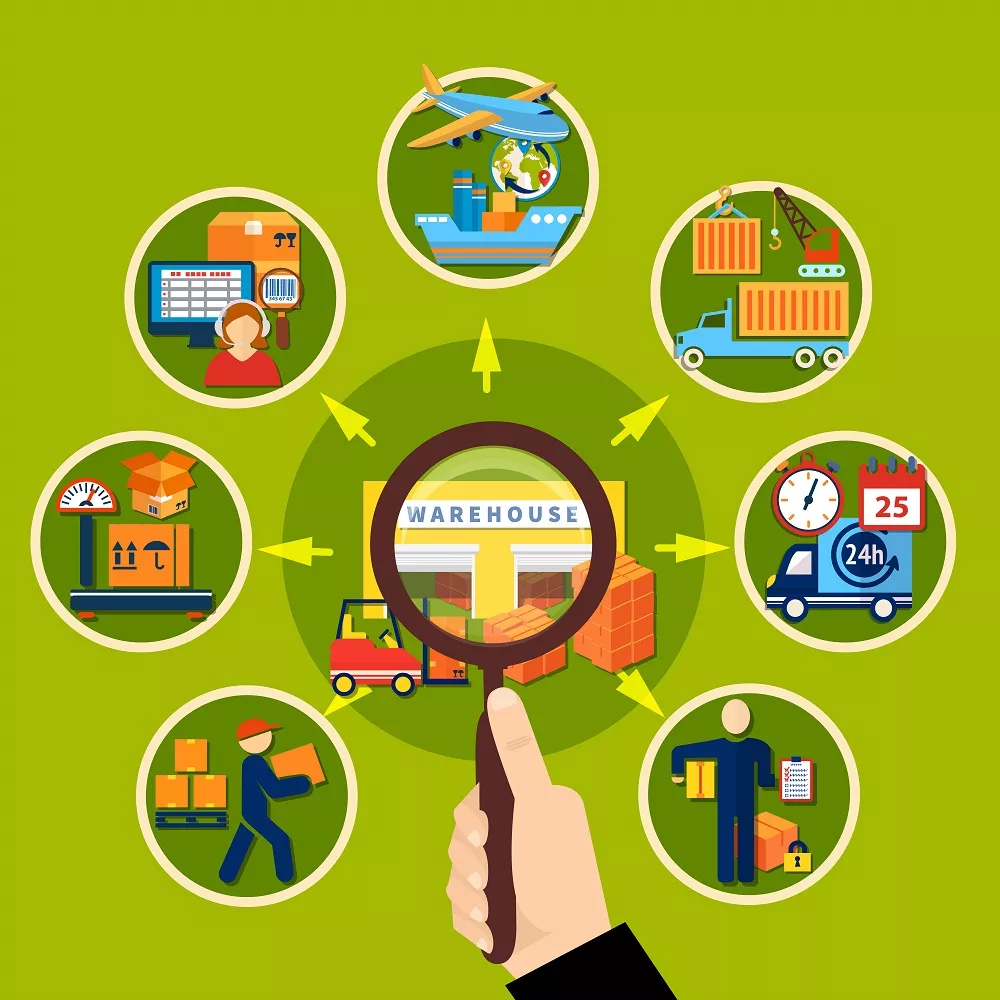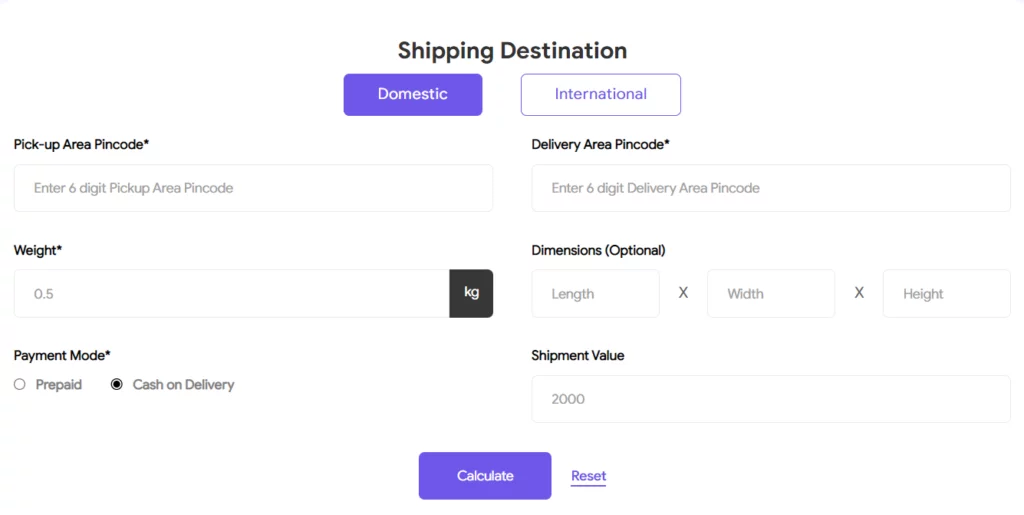Any ecommerce business owner can become insane and want to give up while attempting to calculate shipping expenses. However, things don’t have to be that way.
I have good news if you’re wondering how much the shipping cost of a package will be or if you need to learn how to calculate shipping costs to distribute goods to thousands of clients around the world.
It’s 2024, which means you can quickly determine your shipping charges using a variety of methods. In this article, we’ll go over the fundamental information you’ll need to get an estimate, extra services, and requirements that could affect the cost of your shipment, as well as a few helpful tools that will teach you how to calculate shipping costs quickly.
Information You Need to Calculate Shipping Costs
When attempting to estimate the cost of sending a box, there are four key elements of data that you will always want. You can typically get an accurate price if you have this information.

Points of Origin and Destination for Shipping
The cost is mostly based on how far a delivery must travel to reach its destination from its point of origin. Generally speaking, prices increase with distance.
Shipping zones are a method used by couriers to calculate the distance a cargo travels from its origin to its destination. There are now eight shipping zones in the US, each divided by a zip code.
The shipping zones, found on each company’s website, are the basis on which couriers like USPS, FedEx, UPS, and DHL base their pricing.
Before you can begin to estimate the expenses, you must have a clear understanding of where you are shipping from and the package’s destination.
Weight of the package
A package’s weight, or deadweight, is its weight. Use a scale to determine its weight. The cost of shipping a product increases with its weight.
There is more dimensional weight, though. Depending on the size of the package you’re using to ship the products, this becomes more challenging.
Size of the package
The package’s dimensions include its length, breadth, and height while it is being shipped with items. The dimensions of packages can vary greatly.
Thus, it’s crucial for online retailers to understand how this can affect the price, especially since dimensional (or volumetric) weight is another fee that couriers charge. In essence, this refers to the amount of room a package occupies in the delivery truck.
Couriers multiply the length, breadth, and height of your delivery, then divide the result by a cubic divisor of their choosing to arrive at the dimensional weight.
To cut shipping expenses, it’s a good idea to educate yourself on dimensional weight and packaging best practices. These straightforward actions can significantly lower your shipping expenses and improve your estimate, which will boost the profitability of your online store.
Timelines for Shipping and Delivery
The delivery time is the amount of time it takes for an item or shipment to reach its destination. Depending on how far the box must go, this can take a few hours to more than a month, with prices in between.
It will cost significantly more to have a parcel delivered overnight than it would use a standard 3–7 day ground service. You’ll need to know how quickly you want your products delivered before you decide to estimate shipping charges.
Also Read: Shopify Shipping Bar Apps to Boost Your Sales in 2024
Factors Affecting Shipping Cost
Due to the various additional taxes based on the destination nation, the size and weight of the shipment, and the delivery window, international shipping can become complicated.
In order to avoid surprising expenses, which are one of the main causes of cart abandonment in eCommerce, it is crucial to undertake thorough research and accurately assess shipping prices.

The four main services or needs that will impact the cost of your cargo are listed below:
Costs associated with shipment insurance
Consider buying shipping insurance if you’re shipping pricey products to guard against lost, stolen, or damaged goods during transit.
The majority of shipments arrive without incident, but mistakes may occur, and if you’re delivering expensive goods, replacing inventory might reduce your revenues. For this reason, it is best to be insured.
Couriers typically charge about 3% of the declared value of your shipment for this service, which is incredibly inexpensive.
Another choice is to buy shipping insurance from independent companies; they are frequently less expensive.
Costs associated with shipping
The logistics of shipping and delivery can occasionally result in extra fees. There are occasions when couriers will charge extra due to many different factors, including delivery location, the sort of items sent, and delivery timing.
Here are some typical shipping-related fees to comprehend:
- Pickup location: Also known as a “remote area surcharge” or “extended area surcharge,” these charges will be applied if the delivery or pickup is made in a place that the courier does not frequently service. Some couriers will also charge extra for picking up packages from residential buildings.
- Gasoline surcharge: An additional fee for fuel, based on a proportion of the delivery expenses, will be added by express couriers. Fuel prices are constantly fluctuating. Therefore this can change from nation to nation, week to week, and month to month. You should pay special attention to this one because the fees can pile up quickly.
- Fees for errors: We all make mistakes from time to time because we’re human, but when it comes to shipping, those mistakes can cost us money in the form of “address correction fees,” “delivery reattempt fees,” and even “return fees.”
Costs associated with parcel handling
There are situations when you’ll pay more for shipping because of the package’s contents, packing, weight, or dimensions.
Anything that a courier finds hazardous to handle, such as chemicals, needles, firearms, and, most significantly, for ecommerce businesses, lithium-ion batteries, falls under the category of dangerous goods.
IATA is the greatest place to find an authoritative list because it defines dangerous commodities on a global scale.
If the package is larger or heavier than usual, composed of a substance like wood or metal, or is cylindrical, there may be an additional charge. Before acquiring any boxes or containers, it is best to confirm these costs.
Costs associated with duties and taxes
You or the recipient of your cargo may be required to pay additional customs and taxes before the shipment is delivered when you ship goods to another country.
Depending on what you are sending and its worth, duties and taxes can be due. These can become complicated and differ by nation. Because they are frequently the source of unstated costs, you should be aware of two sorts of obligations.
- DDU shipments (Delivery Duty Unpaid): The recipient must pay the duty in order to get the package released from customs. If the recipient declines the shipment or refuses to pay the taxes, then you, as the sender, is still obligated to pay. This is why it’s best practice for you as a merchant to be as open and honest about your overseas shipping charges as you can. You get to save money.
- DDP shipments (Delivery Duty Paid): With this obligation, the sender is in charge of covering the cost, but the math is trickier. When the delivery reaches the destination nation, couriers will charge a “DDP handling fee” for processing the payment of the taxes and duties on your behalf. Based on the percentage of the taxes and duties, a “disbursement fee” is determined. Yes, it’s complicated, but at least with this approach, you’ll be sure the package won’t be sent back because the recipient doesn’t pay or refuses to accept it.
When the consignment reaches the destination country, the couriers will charge you extra for paying the T&D on your behalf. You can anticipate a “disbursement fee” in addition to the set “DDP handling fee” for taking care of certain taxes and duties.
Understating the products on the commercial invoice may result in extra charges and protracted delivery delays. The customs clearing company may frequently ask for a fresh invoice if they think the claimed value is less than the market value, which could result in extra charges.
Additional storage costs for keeping the package could apply if it is not received within the specified time range. The courier may also charge you if you understate the contents of the box. As a result, this is one area where extra caution and attention to detail are required.
Using a Shipping Cost Calculator
You can greatly greatly benefit by adding a shipping cost estimator to your website. They’re an effective technique to communicate the cost to the typical potential customer. You can include each variable as well as the fixed expenses incurred during shipping.
A person only has to provide those specifics to get an accurate estimate of what they will be charged. If you have a shipping partner you want to work with, you can just enter your own profit margins into the shipping cost estimator they have provided on your website. A potential consumer will be able to do this and determine delivery costs quite easily.
You can estimate the cost of their various services using the shipping calculators that USPS, UPS, and FedEx have created on their websites.
The fundamental details covered in more depth above, including the shipping point of origin and destination, package dimensions, weight, and delivery time, must be on hand.

Ways for Ecommerce Startups to Reduce Shipping Costs
It’s crucial to keep your delivery costs minimal. We’ve already discussed how it boosts revenue and draws in new clients.
Your web store’s hosting speed is something else you need to pay attention to. Customers will leave if your pages take an eternity to load. Make sure the hosting you use for your online shops is trustworthy!
- You can put your money toward the production stage rather than the product’s packaging.
- Begin your search for regional carriers because they offer the same service for less money. But keep in mind that their network is constrained.
- Utilize online shipping. You can choose priority mail orders if you want to cut costs with the Postal Service.
- Choosing the least expensive shipping is advised because it gives you a competitive edge over your rivals. This also implies that you need to consider the shipping’s quality.
- The shipping and logistics processes will initially demand a lot of your attention, but you must anticipate automating the process so that you may concentrate more on the business activities.
- Utilizing the packages provided by the shipping business is an excellent method to cut money.
- It is cheaper to buy shipping labels in advance. You can cut costs by almost 20%.
Read also: 10 Best WooCommerce Shipping Plugins For Your WooCommerce Store
3PL services to Save Money
A third-party fulfillment (3PL) supplier should be considered by expanding ecommerce enterprises that execute more than 100 shipments each month to save money.
An order fulfillment business known as a Third Party Logistics Company (3PL) is in charge of keeping your products in storage, handling your incoming orders (pick and pack), and shipping them on your behalf. The following are the easy methods to save money with 3PL:
- Ship from many local and foreign warehouse locations to give your customers faster, more efficient service.
- Hire experts to do the selection and packing so you and your staff may spend more time concentrating on expanding your company.
- Instead of figuring out fulfillment and shipping costs depending on your own time commitment, streamline such processes.
- There is no need to master intricate fulfillment and logistics processes.
Final Words
There are many methods you can employ to determine shipping costs and maintain their competitiveness, as was previously demonstrated. Your sales figures will significantly increase as a result, as will the reputation of your business.
You may establish a relationship with your customers by being open and honest about your prices and the products you have available. This will ultimately be beneficial for your store.
I hope you found this guide on why calculating shipping costs in advance is useful for your ecommerce endeavor. Which part of the guide did you like the most? Let’s have a conversation in the comments below.
FAQs
Why should I bother calculating shipping costs in advance for my WordPress e-commerce store?
Calculating shipping costs in advance is crucial for several reasons. It helps you set accurate product prices, prevents unexpected expenses, and provides transparency to your customers, enhancing trust and satisfaction with your online store.
How can calculating shipping costs in advance save me money?
By accurately estimating shipping costs beforehand, you can avoid undercharging or overcharging customers. This not only prevents financial surprises but also helps you remain competitive in the market, attracting and retaining customers through fair and transparent pricing strategies.



